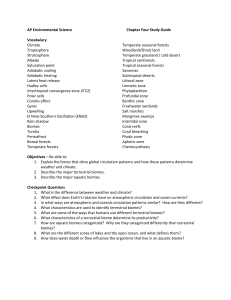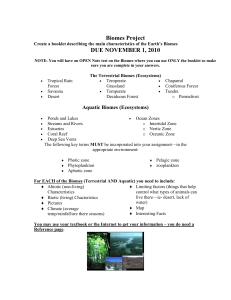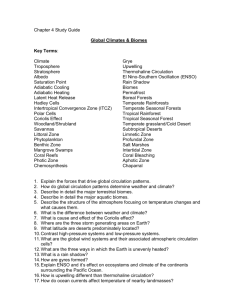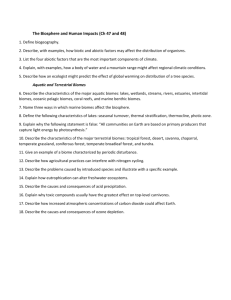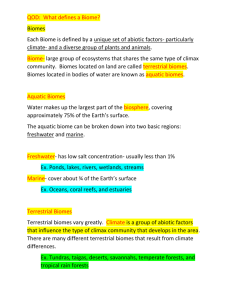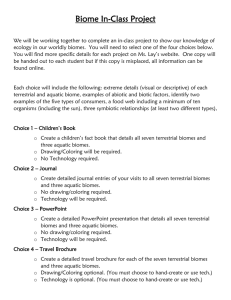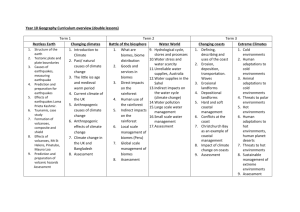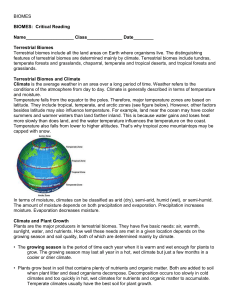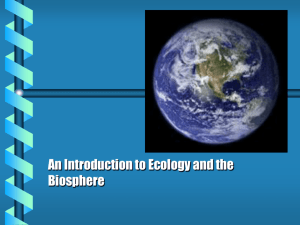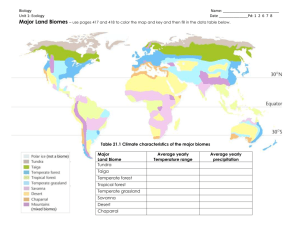Reading Guide
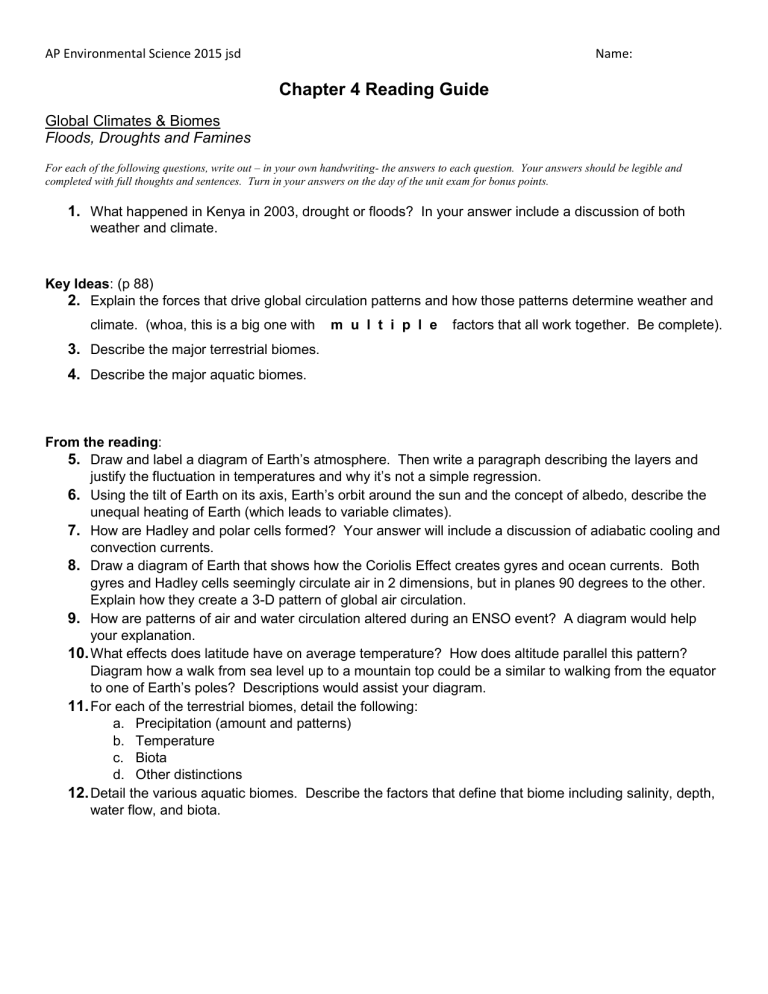
AP Environmental Science 2015 jsd Name:
Chapter 4 Reading Guide
Global Climates & Biomes
Floods, Droughts and Famines
For each of the following questions, write out – in your own handwriting- the answers to each question. Your answers should be legible and completed with full thoughts and sentences. Turn in your answers on the day of the unit exam for bonus points.
1. What happened in Kenya in 2003, drought or floods? In your answer include a discussion of both weather and climate.
Key Ideas : (p 88)
2. Explain the forces that drive global circulation patterns and how those patterns determine weather and climate. (whoa, this is a big one with m u l t i p l e factors that all work together. Be complete).
3. Describe the major terrestrial biomes.
4. Describe the major aquatic biomes.
From the reading :
5. Draw and label a diagram of Earth’s atmosphere. Then write a paragraph describing the layers and justify the fluctuation in temperatures and why it’s not a simple regression.
6. Using the tilt of Earth on its axis, Earth’s orbit around the sun and the concept of albedo, describe the unequal heating of Earth (which leads to variable climates).
7. How are Hadley and polar cells formed? Your answer will include a discussion of adiabatic cooling and convection currents.
8. Draw a diagram of Earth that shows how the Coriolis Effect creates gyres and ocean currents. Both gyres and Hadley cells seemingly circulate air in 2 dimensions, but in planes 90 degrees to the other.
Explain how they create a 3-D pattern of global air circulation.
9. How are patterns of air and water circulation altered during an ENSO event? A diagram would help your explanation.
10. What effects does latitude have on average temperature? How does altitude parallel this pattern?
Diagram how a walk from sea level up to a mountain top could be a similar to walking from the equator to one of Earth’s poles? Descriptions would assist your diagram.
11. For each of the terrestrial biomes, detail the following: a. Precipitation (amount and patterns) b. Temperature c. Biota d. Other distinctions
12. Detail the various aquatic biomes. Describe the factors that define that biome including salinity, depth, water flow, and biota.
